SaaS marketing OKR examples [w/Template]
Marketing OKRs are an important part of monitoring progress and establishing goals for your B2B SaaS company. Use these examples and our template to...

SEO can be as simple or as complex as you want it to be.
At Kalungi we aim to not only introduce and explain concepts but also provide you with actionable tools and tips to execute on what you learn with us.
Even internally, we often refer back to our blogs as how-to manuals. For example, this Beginner's guide to friendly SEO content is a great A-Z review for the basics. For a more complete portrait of the SEO process from workshop and goal-setting to launching your SEO strategy, we have this 8-Step Guide to Building a World-Class Strategy in 2021. If you’re a CEO who hasn’t hired an SEO expert yet, a quick read of this Guide to SEO for CEOs in SaaS is all you need.
Today, we’re talking about what to do once you’ve already gone through all of the above and have been executing on your SEO strategy for a while.
Before we begin, let’s review the steps you should have taken on your way to reaching this point (the links above go into much greater detail):
It all starts with the SEO workshop. Your growth goals define your SEO strategy.
To produce a list of keywords you’ll prioritize and go after, you must look at your industry, competitors, and product
Not all keywords are created equal.
After looking at volume and difficulty, you prioritize keywords based on what you perceive to be most important to your prospective customers. What are your most likely customers going to type in the search bar? If you could only rank for a handful of keywords, which ones have the highest priority? You’ll notice that a lot of keywords have the same root. They can be grouped into topic clusters.
This will help you dial in your content strategy for the next several months.
Combine your prioritization with the buying intent from step 4 and go for your highest priority, highest intent keywords. Bonus if they’re low difficulty and high volume.
Your competitive research from step 2 will help you identify which keywords are not being talked about by anyone. That’s prime real estate for you to move in first and fast.
This is what we’re talking about today!
I’d also like to point you towards our Complete Guide to On-Page SEO to make sure you’ve completed everything on that checklist.
It’s no secret to anyone, but SEO’s biggest factor in achieving high search rankings is good content. They ask, you answer. Content and SEO are the ultimate symbiotic relationship in digital marketing. So how aligned are your writers and SEO experts? If they’re the same person, you hopefully don’t have to worry about this as much.
But what we’ve found is that within bigger software companies, copywriters and SEO specialists don’t interact often. The process involves taking the SEO research and prioritization as an input and producing a content calendar as an output, and Content takes it away from there.
Remote work has increased the tendency of certain functions or team members working in silos. Remote work has also increased time spent in meetings that could have been better used elsewhere. Finding that common ground has been many companies’ challenge (among others) this year.
Set a recurring sync for your content and SEO leads to monitor progress, discuss what’s working and what isn’t, and to keep both content product and SEO strategy top of mind.
SEO is an ongoing, never ending process. Of course, we don’t expect you to conduct SEO research every few months, but you also shouldn’t continue using data from two years ago. Likewise, your content calendar could be scheduled out months in advance, but perhaps your sales team is noticing a trend that could be capitalized on by shifting your content strategy to another direction.
SEO can be technical, on-page, off-page, etc. That’s a fun rabbit hole to go down in. But to keep it to the point, the metrics you care about will change over time.
We talk about this in greater detail in the T2D3 Book and this is a philosophy we follow company-wide when it comes to our quarterly OKRs.
Your objectives remain the same from quarter to quarter, but your Key Results change. Either in number or in goal.
For example, when starting out your SEO journey, Key Results could be:
Over time, the Key Results become more meaningful, more bottom-of-funnel, and closer to revenue attribution. For example:
This concept is the inspiration behind this post.
For the purposes of our exercise today, let’s assume your goal is “# of keywords ranked in the top 10”
You’ve heard us talk about leading and lagging indicators in the context of dashboards, OKRs, and overall performance measurement and reporting.
Quick review:
In general, a goal’s leading indicator can be another’s lagging indicator.
For example,
Let’s apply that to SEO.
At its core, the goal of SEO is building a bigger, more inviting, more accessible storefront so that widely used guides (search engines) recommend you first. Of course, we’re doing all of this digitally.
Feasible, impactful goals have been set. Content and SEO are meeting bi-weekly or monthly to ensure that their goals are achieved by the marked date. What do they talk about? What do they look at?
Content and SEO care about:
(Note: search engine rankings are not only affected by the content itself but by other types of SEO as well such as backlinks, page load speed, and more technical on-page and off-page optimizations)
Your content calendar should clearly answer the questions “how many blogs have we published this quarter?” and “how many content pieces are we expected to publish next month?”. Your Content lead should also know the results metrics as well. For example:
The source: Your CMS or third-party analytics tool.
HubSpot is great at providing first-party data straight from the website hosting itself.
It allows you to get an accurate measurement of traffic:
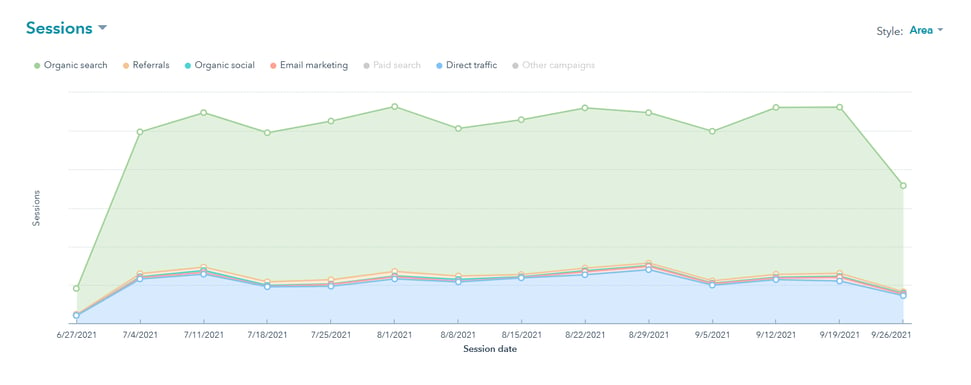
Conversions:
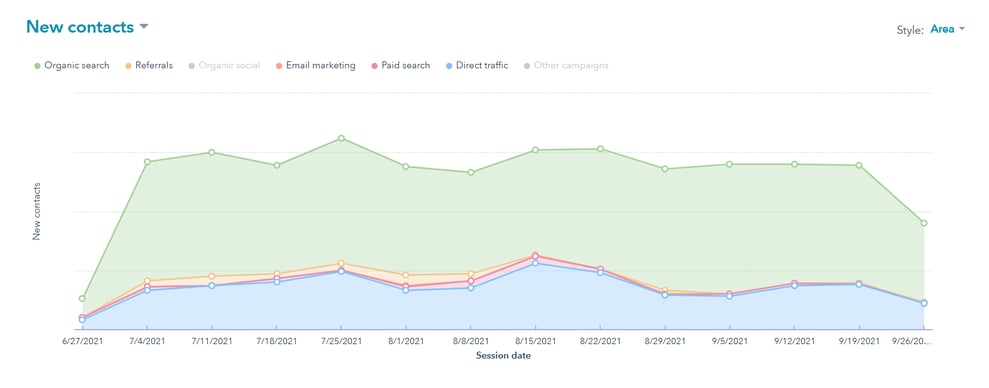
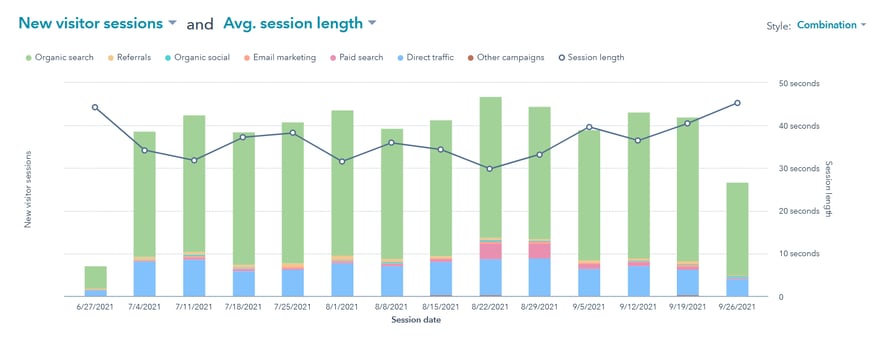 Individual page performance:
Individual page performance:
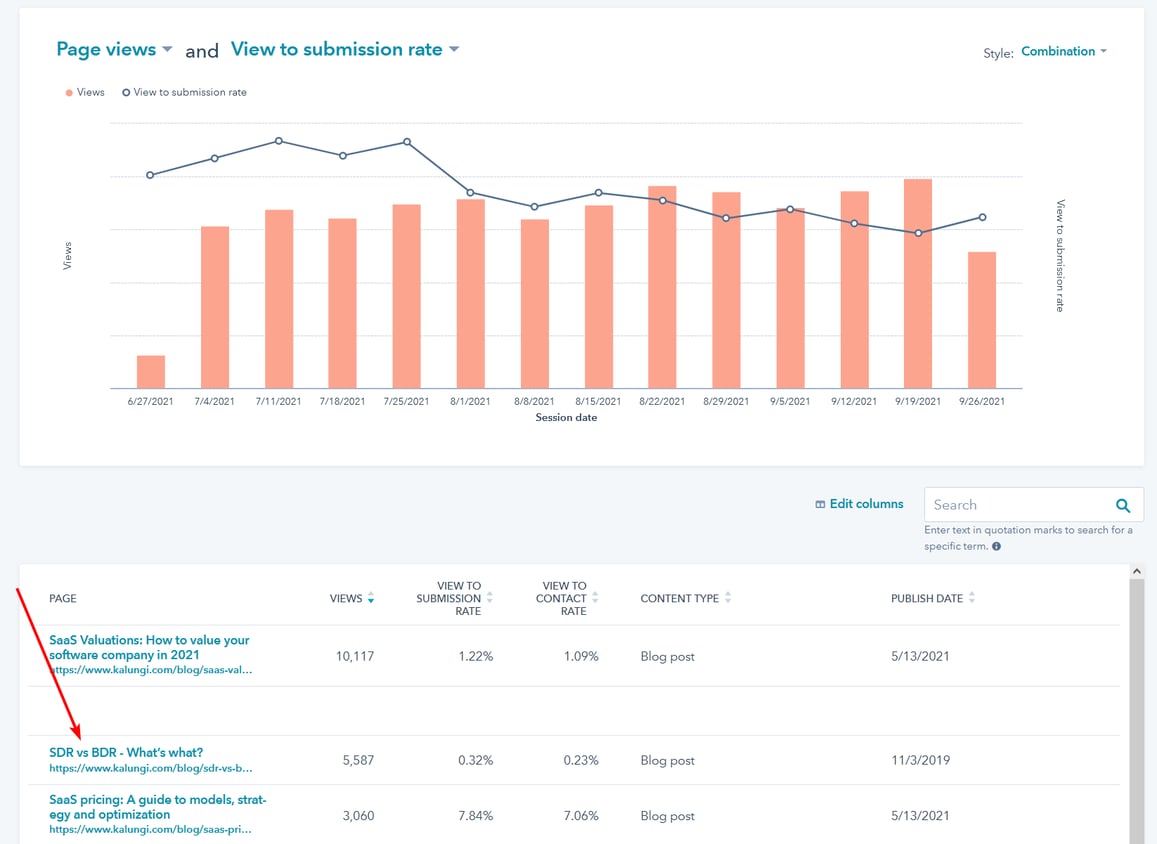
As well as search queries and their keyword rankings:
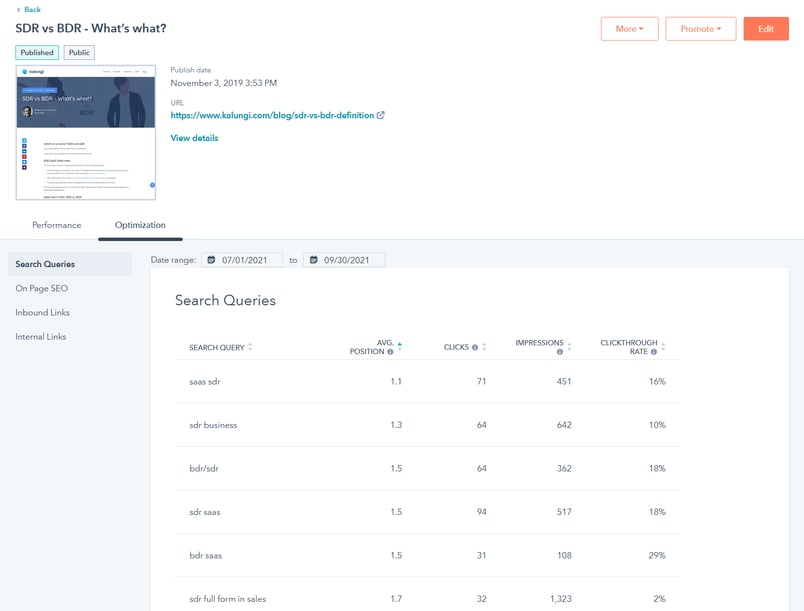
SEMRush remains my tool of choice for keyword-related work.
It gives you a good representation of all the keywords you’re ranking for and allows you to filter by volume, keyword rank, etc.
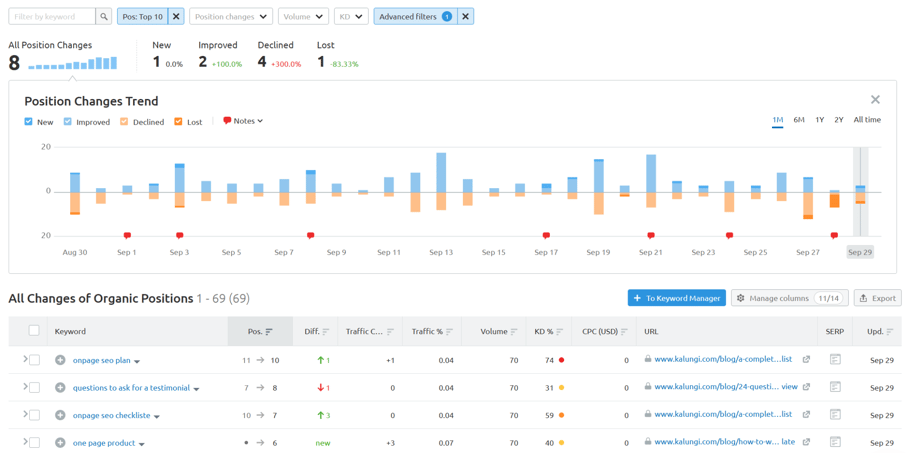
It also allows you to look only at position changes, which is where you’ll measure your progress against the goal “ # of new keywords in the top 10”.
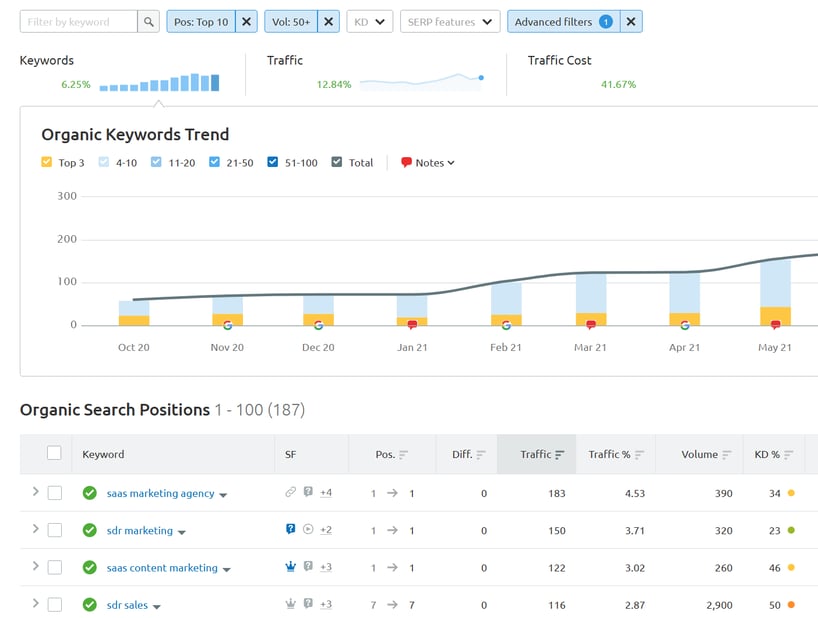
Other sources you can use include Google Analytics and Search Console to stay on top of your organic search growth.
You’ve done the work; you’ve conducted your SEO research and your content team has been hard at work producing valuable, user-friendly content for a while. It’s time to measure the outcomes of all your efforts and to determine how to monitor progress within each period to ensure the goals are met. In one sentence:
Align SEO and content.
They should have a recurring meeting where they align on:
The CEO or CMO can then get a clear and concise update every week or two on what’s working, and what’s next. Every three months or so, SEO will update the keyword research and the leadership team will revisit its SEO priorities to make sure everyone is on the right track.
Nassim was a Product Marketing Manager at Kalungi before moving to Amazon Business.
Marketing OKRs are an important part of monitoring progress and establishing goals for your B2B SaaS company. Use these examples and our template to...
Creating the first batch of content to fuel your marketing programs is actually not that hard. The main challenge is to not overthink it.
Created a list of customers who are “at-risk” of leaving? Here are the 4 areas and questions to consider as part of your churn prevention program.
Be the first to know about new B2B SaaS Marketing insights to build or refine your marketing function with the tools and knowledge of today’s industry.